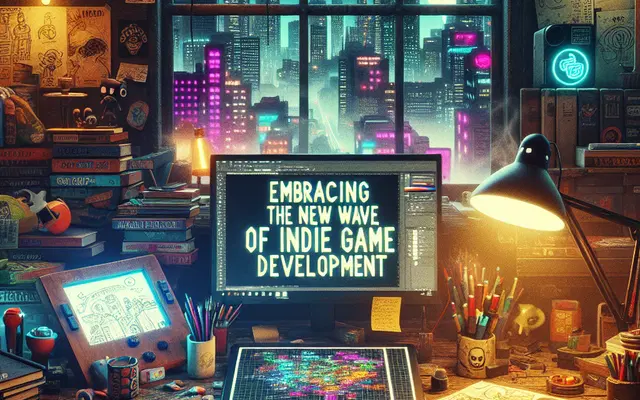Unfolding the World of Indie Game Design

Exploring the Creative Freedom in Indie Game Development
Indie game development stands as a testament to the sheer creativity and innovation that individual developers and small teams can bring to the gaming world. Without the constraints of large publishers, these creators enjoy unparalleled creative freedom, allowing them to experiment with unconventional gameplay mechanics, storytelling, and artistic direction. This autonomy not only drives the uniqueness of indie games but also pushes the boundaries of what's possible in game design, encouraging others in the industry to take bold steps toward innovation.
The influence of indie game design on upcoming game releases is substantial, as it often sets new trends that the larger gaming industry adopts. Indie titles such as 'Braid' and 'Hollow Knight' have demonstrated that games with thought-provoking narratives and meticulous mechanics can captivate audiences without blockbuster budgets. As a result, many mainstream developers are now looking to harness some of the trailblazing elements introduced by indie games, from pixel art aesthetics to deeply engaging single-player experiences.
However, indie game production is not without its hurdles. Independent developers commonly face challenges such as limited resources, the need for self-promotion, and a highly competitive market. Despite these obstacles, the triumphs of indie games are undeniable; they often generate dedicated fan communities and win critical acclaim, proving that passion and craftsmanship can prevail. The resilience and success stories of indie developers continue to inspire newcomers to the field, further fuelling the growth of this dynamic sector of the gaming industry.
The Influence of Indie Game Design on Upcoming Game Releases
Indie game development has paved the way for creators to experiment with innovative concepts, unfettered by the constraints commonly found within large gaming studios. This creative freedom empowers indie developers to craft unique gaming experiences, which often influence mainstream titles. The rise of indie games has introduced fresh narratives, alternative game mechanics, and inventive art styles into the broader gaming landscape. As a result, many upcoming game releases exhibit the hallmarks of indie influence, signaling a shift in the industry's approach to game design.
The influence of indie game design on the gaming industry cannot be understated. Trailblazing indie titles have demonstrated that games can be both artful and commercially successful. This realization has encouraged larger studios to take notice and incorporate elements such as complex storytelling, pixel art aesthetics, and exploratory gameplay into their own projects. These trends are increasingly evident in upcoming game releases, as they blend the best of both worlds, combining indie ingenuity with high production values.
Indie game production, while renowned for its innovation, also confronts unique challenges such as limited budgets and workforce constraints. Despite these hurdles, indie developers tirelessly surmount obstacles to create groundbreaking titles. This indomitable spirit translates to a certain authenticity and passion evident in their games, which invariably influences the expectations for quality and originality in future releases. As larger studios draw inspiration from these indie successes, upcoming game releases reflect a convergence of accessibility and artistic vision.
Navigating the Challenges and Triumphs of Indie Game Production
Indie game development offers a unique landscape of creativity and personal vision, unbound by the constraints often found in larger studio projects. This autonomy allows indie developers to experiment with innovative gameplay mechanics, narrative styles, and artistic expressions that might otherwise be stifled. As a result, the indie gaming scene has become a hotbed for fresh and diverse ideas, often introducing trends that ripple through the entire industry. Moreover, the close-knit communities around indie games foster an environment where player feedback can directly influence game refinement and evolution, marking a distinct advantage in game design approaches.
The rise of indie games has significantly impacted the anticipation and expectations surrounding upcoming game releases. As gamers witness the artistic and narrative depth that indie titles can offer, the demand for originality and quality storytelling in mainstream gaming has increased. This heightened expectation motivates developers of all sizes to push their creative limits, leading to a more dynamic and compelling market. Indie games often act as proving grounds for new concepts that, when successful, can redefine genres and set new standards for player engagement and satisfaction.
Despite the appeal and potential of indie game development, it is not without its challenges. Limited resources, financial constraints, and the need for multi-role expertise can be daunting for independent creators. However, when these hurdles are overcome, the triumphs are incredibly rewarding. Successful indie games demonstrate that passion and innovation can prevail, inspiring others to embark on their own game design journeys. These accomplishments not only expand the diversity of available games but also contribute to a richer, more inventive industry.












